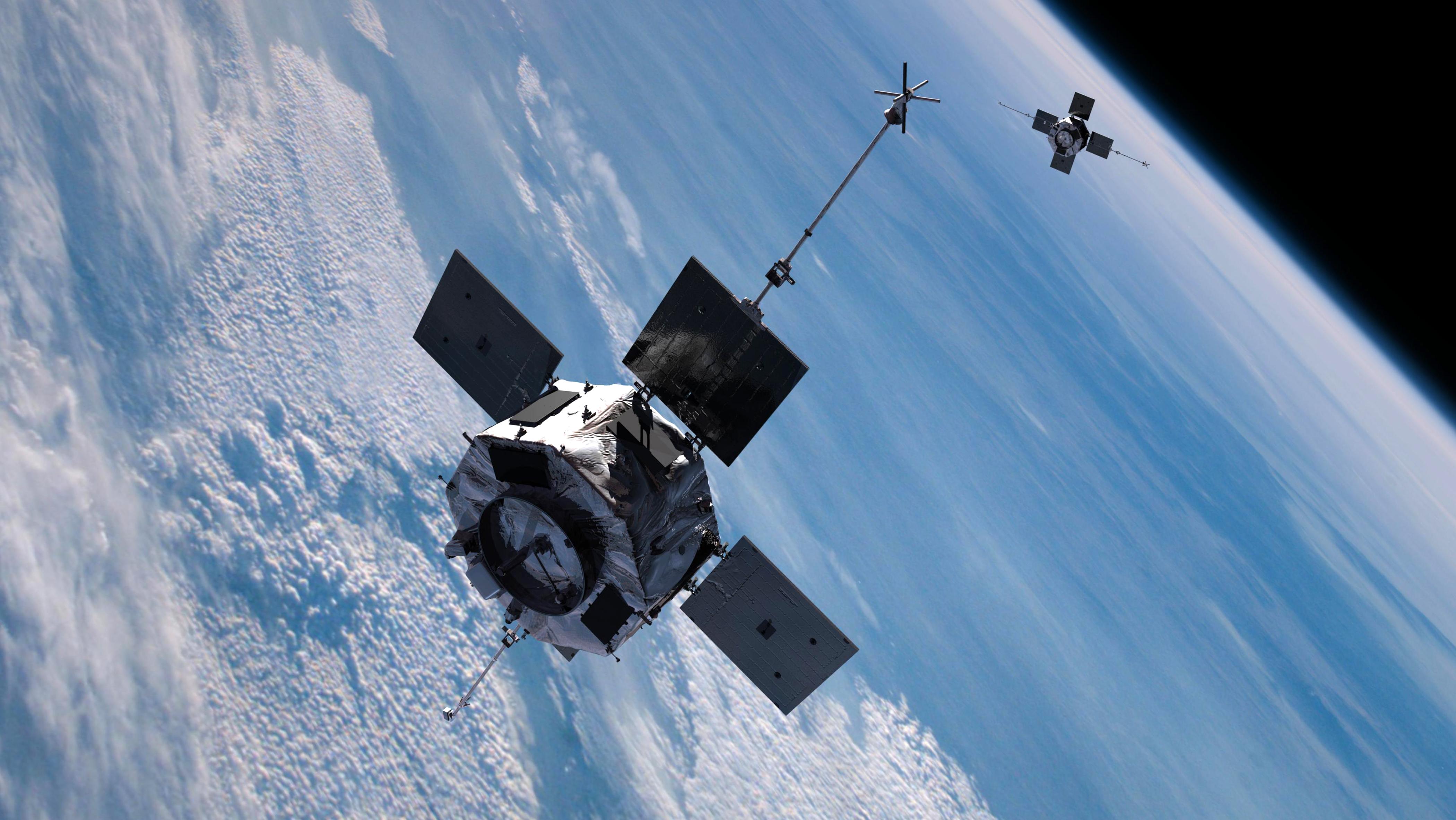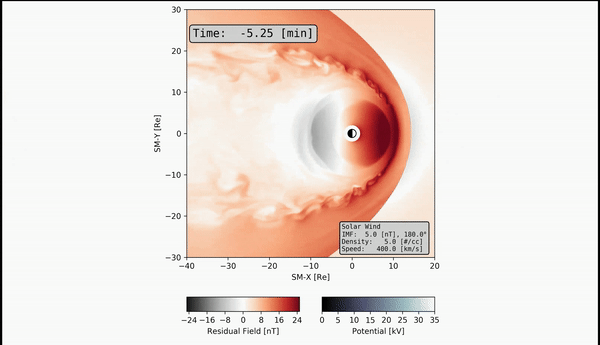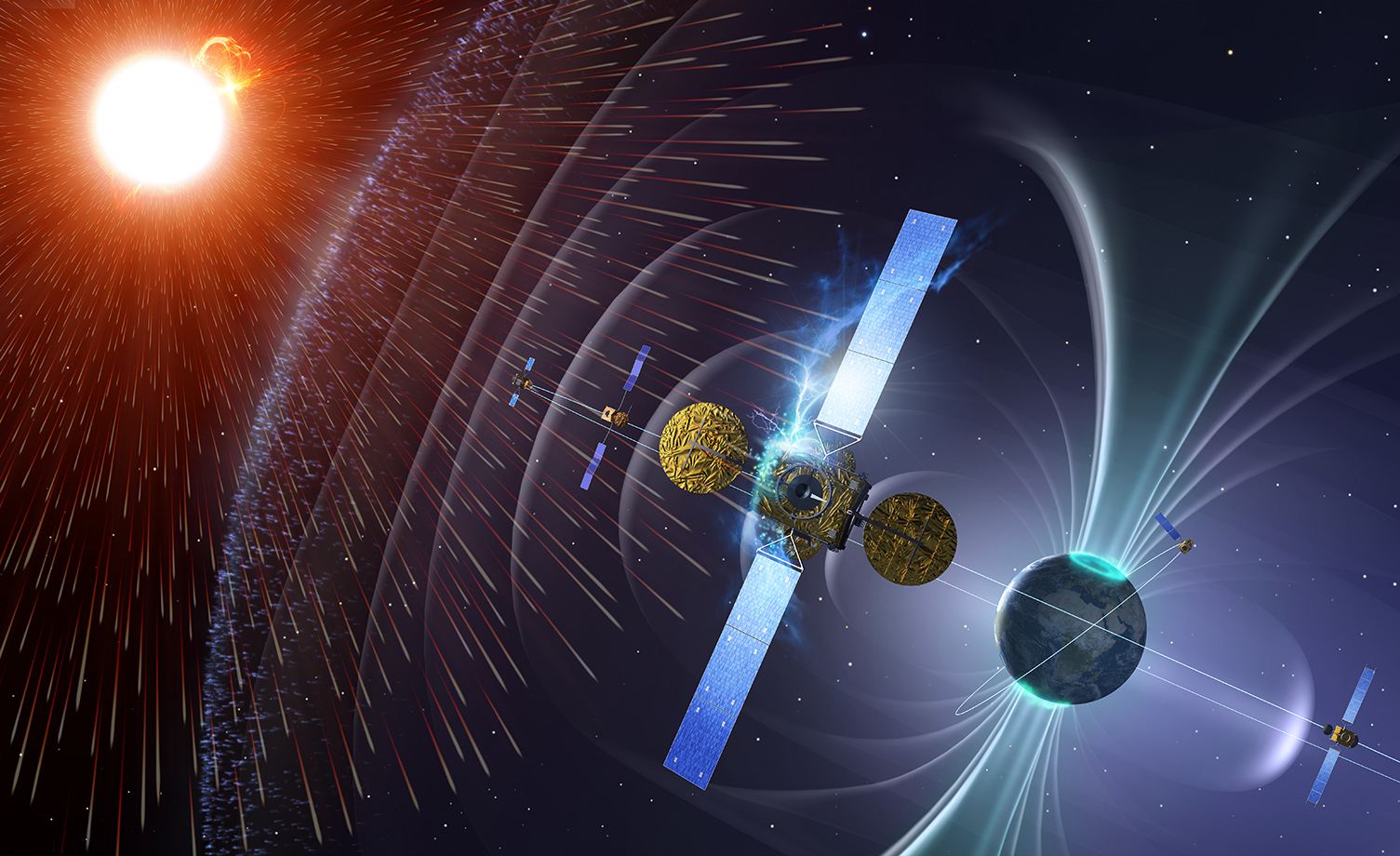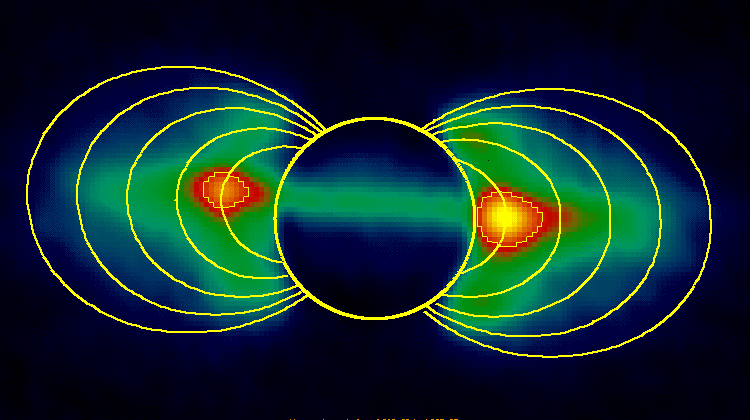Nine years ago this week, NASA’s Van Allen Probes launched on a mission to fly through and study Earth’s ring current and radiation belts — rings of charged particles trapped in Earth’s magnetic field. Built and operated by the Johns Hopkins Applied Physics Laboratory in Laurel, Maryland, the Van Allen Probes transformed our understanding of the particle radiation environment close to Earth during their seven-year mission, notably showing how quickly it swings from tepid to extreme.
The radiation levels in the belts ebb and flow with various events, including blasts of the Sun’s solar wind full of charged particles, injections of particles from Earth’s magnetosphere, or interactions between waves and particles in the heart of Earth’s radiation belts. These events can cause radiation levels to spike to hazardous levels in a matter of minutes, and those spikes put orbiting satellites and astronauts at risk.
More than 3,000 operational satellites currently orbit Earth, the majority of them aerospace company “mega-constellations” in low Earth orbit (LEO), some 300-1,250 miles (500-2,000 kilometers) high. By 2030, we could see as many as 50,000 satellites surrounding Earth and more astronauts in space than ever before.
With the Van Allen Probes gone, “we are now blind to the most dangerous manifestations of near-Earth particle radiation,” said APL space physicist and Van Allen Probes project scientist Sasha Ukhorskiy. This means astronauts and satellites are at risk.
“Now is a good time to think about what comes next,” said David Sibeck, Van Allen Probes mission scientist at NASA’s Goddard Space Flight Center in Greenbelt, Maryland.
Van Allen Probes team members, researchers and satellite control specialists from around the globe gathered virtually in May to discuss life after the mission and what’s needed to protect the growing number of people and assets sent to space.
They emerged with four big takeaways:
1. SEND A FLEET OF SPACE PROBES TO EARTH’S RADIATION BELTS

Yes, it would mean putting more satellites around Earth, but scientists argue that we can’t understand the fine details of how the radiation belt intensity changes over time across their whole range unless we track it in multiple locations at once.
“Those old enough to remember can recall that a prototype early plan for Van Allen Probes was to have multiple spacecraft on similar orbits but different local times,” Sibeck said. “In the end, we had two.”
The mission rewrote the textbook on near-Earth particle radiation, but the variability in the belts turns out to happen much faster and much more locally than the two probes alone could keep up with.
Capturing how particle intensities change around the globe every 10 minutes or less, Ukhorskiy said, requires a constellation of more than 10 satellites like the Van Allen Probes around the planet.
The satellites’ orbits would move from geostationary orbit distance at 22,236 miles (35,786 kilometers, where they move synchronously with Earth’s rotation) to within low Earth orbit distances. That comprehensive set up, along with ground-based operations, would make it possible to untangle the rapid variability of energetic electrons and ions entering and exiting the belts.
2. ADVANCE MODELING CAPABILITIES FOR BETTER SPACE WEATHER FORECASTING

The Van Allen Probes returned an unprecedented trove of data that went on to support the rapid development of various physics-based, machine learning and empirical models. The probes revealed properties of various plasma waves that transfer energy between particles, unveiled the drivers that cause particle fallout from the belts, and even unlocked the physics that accelerate the belts’ “killer” electrons that can disrupt satellite operations.
But the data are still limited. Ukhorskiy pointed out, for one, that the Van Allen Probes operated during a historically low solar cycle, the Sun’s cycle of magnetic activity that happens every 11 years. During some cycles, the Sun churns out storms that create spectacular auroras at Earth’s poles. But for unknown reasons, the solar cycle during which the Van Allen Probes operated was the weakest in a century. “So, you can’t model anything outside of the box,” Ukhorskiy said. “If we have a stronger solar cycle, we can’t extrapolate the Van Allen Probes’ measurements to it.”
Wen Li, a space physicist at Boston University, added that current models are still missing physical processes that sculpt the whole system, including nonlinear interactions between belt particles and plasma waves, and processes that couple the Sun’s solar wind, Earth’s magnetosphere and Earth’s upper atmosphere (the ionosphere and thermosphere).
“Ultimately, we need a more robust modeling infrastructure to provide advanced and accurate forecasting, nowcasting [estimating current conditions], triage and forensics efforts,” Ukhorskiy said, adding that the data to run those models would mostly come from a constellation of satellites similar to the Van Allen Probes, coupled with data from other satellites and ground-based resources.
3. GAIN A BETTER UNDERSTANDING OF HOW RADIATION AFFECTS SPACECRAFT

High-energy electrons, protons and cosmic rays break down solar cells, discolor camera lens glass and coatings, degrade insulation materials, and fry electronics. Spacecraft materials in the harsh environment can even become so electrified that they cause little lightning strikes on the satellite itself.
“Radiation affects pretty much every part of a spacecraft in one way or another,” said Drew Turner, a space physicist at APL.
But we still know little about how the whole slew of charged particles in space interact with spacecraft because the radiation environment can change quickly and randomly, and the drivers that cause those changes are complex, mostly unpredictable and impossible to simulate perfectly.
“There’s just no facility on Earth that has anywhere near the ability to reproduce the range of particles and radiation intensities that we have in space,” Turner said.
The way around that is by doing active experiments in space, such as setting up a group of electronics boards, solar cells or lenses the same way as on a spacecraft, flying them to space and seeing how they degrade with time.
It’s vital to do so, the researchers said. While the most robustly engineered satellites (including the Van Allen Probes) can last from 5 to 15 years, a lot of satellites being sent up are CubeSats and SmallSats that won’t last much more than a year or two. With too many lifeless satellites zipping around the globe, inadvertent collisions are possible, producing space debris that could start a cascade of destroyed spacecraft.
4. GO EXPLORE THE RADIATION BELTS OF OTHER PLANETS

“If we want to be able to understand radiation belts at all planets across the universe and their full impact on habitability, we can’t get there by studying only Earth,” said Ian Cohen, a space physicist at APL. “We want to get to a point where we have a standard model of radiation belt physics — one that holds regardless of the size and characteristics of a planet — and to do that, we have to look at other planets.”
Jupiter is often mentioned as a next possible destination. It has a uniquely intense radiation environment, sourced mostly from its volcanic moon Io, and its colossal magnetosphere (which extends to Saturn’s orbit some 400 million miles away) is controlled entirely by the fast rotation of the planet. That’s very unlike Earth’s magnetosphere, which is controlled by the Sun’s solar wind. Jupiter’s magnetic field is so strong that it can even capture electrons traveling near light speed.
“We can use Jupiter’s magnetosphere as a laboratory, perhaps, to study the in situ electron environment to better understand our remote observations of other astrophysical processes,” including exoplanets in other solar systems, said George Clark, another APL space physicist.
Clark is among a team of APL scientists that recently developed and presented the conceptual JUGGERNOT mission to Jupiter, which could initiate in-depth investigations into Jupiter’s radiation belts, the most intense in the solar system. Short for Jupiter’s Global Magnetic Environment and Radiation Observatory, the mission’s goal is to explore the universal processes operating in Jupiter’s vast magnetosphere and how its blistering radiation environment affects the planet’s moons and its atmosphere.
Banner image: Shortly after launch on Aug. 30, 2012, particle detection instruments aboard NASA's Van Allen Probes revealed the existence of a new, transient, third radiation belt around Earth, shown in this image. Credits: NASA's Goddard Space Flight Center/Johns Hopkins APL
Related Topics
For Media Inquiries
For all media inquiries, including permission to use images or video in our gallery, please contact:
Michael Buckley
All Media Resources

